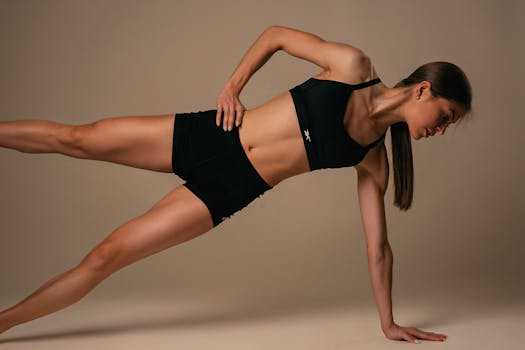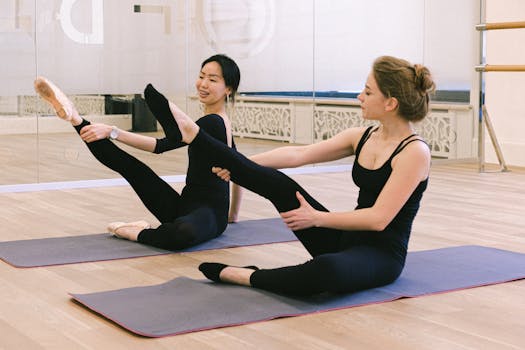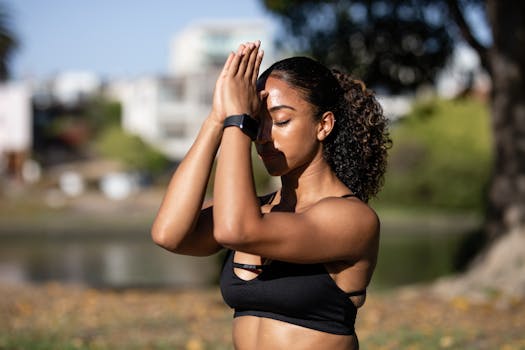Beginner’s Guide to Yoga: Poses and Practices to Start Your Journey
Takeaways: Yoga is a holistic practice that benefits both the mind and body. This guide covers essential yoga poses for beginners, tips on how to start practicing, and the importance of mindfulness in yoga. By the end, you’ll have the knowledge you need to begin your yoga journey.
Yoga is more than just a workout; it’s a path to self-discovery and wellness. For those new to yoga, it can be daunting to know where to start. This article aims to demystify the practice and provide a solid foundation for your yoga journey. Whether your goal is to improve flexibility, reduce stress, or enhance overall well-being, yoga offers a path to achieve these goals.
Understanding Yoga
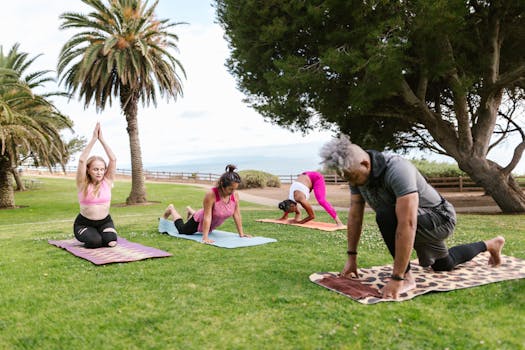
Some of the most common styles of yoga include:
- Hatha Yoga: A gentle introduction to the most basic yoga postures.
- Vinyasa Yoga: A dynamic flow of postures linked by breath.
- Yin Yoga: A slower-paced style focusing on deep stretching.
- Ashtanga Yoga: A rigorous style involving a set sequence of postures.
- Restorative Yoga: A calming practice using props to support relaxation.
Each of these styles offers unique benefits and can be tailored to your individual needs. As a beginner, it’s beneficial to explore various styles to find the one that resonates with you.
Essential Yoga Poses for Beginners
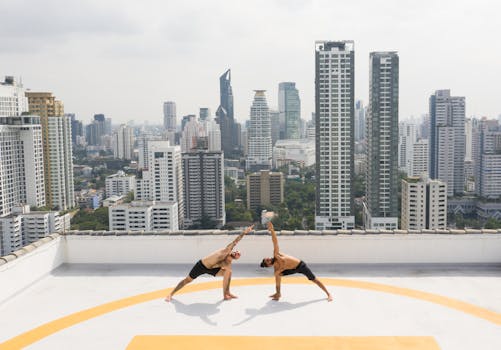
1. Mountain Pose (Tadasana)
This foundational pose helps improve posture and balance. Stand tall with your feet together, arms at your sides, and engage your core. Breathe deeply, feeling the connection between your feet and the ground.
2. Downward-Facing Dog (Adho Mukha Svanasana)
A great pose for stretching the entire body. Start on your hands and knees, tuck your toes, and lift your hips towards the ceiling, forming an inverted V-shape. Hold for several breaths, relaxing your neck and shoulders.
3. Child’s Pose (Balasana)
This restorative pose is perfect for relaxation. Kneel on the mat, sit back on your heels, and stretch your arms forward or let them rest by your sides. Breathe deeply and allow your body to relax.
4. Warrior I (Virabhadrasana I)
This pose builds strength and confidence. Stand tall, step one foot back, bend your front knee, and raise your arms overhead. Focus on your breath as you hold this powerful stance.
5. Cat-Cow Stretch (Marjaryasana-Bitilasana)
A dynamic stretch that warms up your spine. Start on all fours, alternate between arching your back (Cat) and dropping your belly (Cow), synchronizing your breath with the movements.
It’s essential to listen to your body and practice these poses with mindfulness. Always prioritize alignment and avoid pushing yourself too hard, especially as a beginner.
Starting Your Yoga Practice

- Find a Class: Look for beginner-friendly classes in your area or online. Many platforms offer virtual classes, making it easy to practice at home.
- Create a Dedicated Space: Set up a peaceful area in your home where you can practice regularly. A quiet, clutter-free space enhances your focus and mindfulness.
- Invest in Equipment: A yoga mat and comfortable clothing are essential. Props like blocks and straps can also be beneficial, especially for beginners.
- Practice Regularly: Consistency is key in yoga. Aim to practice a few times a week, even if it’s just for a short session.
- Be Patient: Progress in yoga takes time. Celebrate small victories and enjoy the journey rather than focusing solely on results.
Incorporating mindfulness into your practice is equally important. Pay attention to your breath and sensations in your body. Yoga is as much about mental clarity and relaxation as it is about physical movement.
Conclusion
Yoga is a beautiful journey that cultivates awareness, flexibility, and strength. By starting with basic poses and establishing a regular practice, you set the stage for a fulfilling experience. Remember to listen to your body, embrace the process, and enjoy the myriad benefits that yoga brings. Whether you’re seeking stress relief, physical fitness, or a deeper connection to yourself, yoga can guide you on your path. For more resources and insights on yoga, consider visiting Yoga Journal, Yoga Basics, and Do You Yoga. Namaste!
